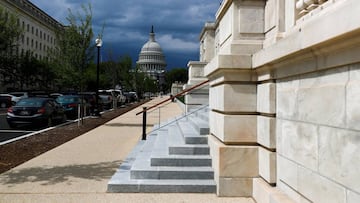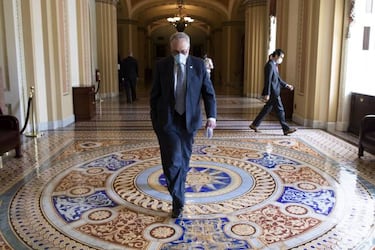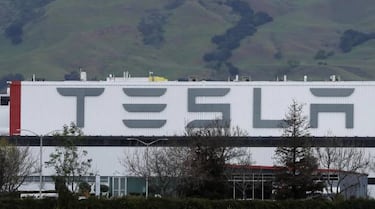Second stimulus check: what is the new $5,000 voluntary loan proposal?
A new plan from the right is being examined which aims to provide struggling Americans with an immediate cash injection, but this one is 'opt-in' for a reason.


As millions of US citizens currently out of work look to manage their financial outgoings with the much needed first stimulus payment, talk has since been around a second bill, one that would see families and businesses kept afloat until the coronavirus crisis is over. The Inland Revenue Services promised to get checks out quickly - beginning with the most vulnerable individuals and families - but as unemployment hits new highs in the country, doubts remain over what the next aid may be.
**Follow the latest US coronavirus developments live**
Stimulus loan of $5,000
Democrats were disappointed from the start with the $1,200-a-month payment initially signed off, and have put forward various proposals, and one that gained much traction would see out-of-work citizens receive $2,000 a month until employment returns to pre-crisis levels. Bi-partisan support of this has not yet been secured and time is ticking on.
A report in the Washington Post, however, has pointed to another proposal, one being made by the American Enterprise Institute and Hoover Institution and said to be under review by senior economists at the White House. In it, they say, households would receive cash, but not in the same way as they did with the previous stimulus checks. It would instead be a voluntary loan check of a value potentially up to $5,000, and that would be in exchange for their retirement benefits via social security being delayed for up to three months.

In the piece published in The Hill, Joshua Rauh and Andrew Biggs explain that this loan - unlike the stimulus check which does not have to be paid back - would see its balance carried forward at a ‘specified and favourable government interest rate’ and this rate would last until they decide to claim their social security benefit. The first payments at that point (after the age of 61), expected to be no more than three months’ worth, would cover the amount, before normal benefits resume thereafter. By electing not to take this ‘advance’ would mean retirement benefits remain unaltered.
Opt-in aid with no deficit increase
The key difference with this proposal is that it would not add to the US national debt. If people need the money then they would receive it now to get them through the crisis but, unlike the first round of stimulus checks, the repayment of this is already factored in a few years down the line. The argument put forward by Rauh and Biggs emphasises that the loans would be ‘collateralised with obligations owed by the federal government, interest rates could be much more favourable than a household or small business might find in the markets today'.

Another difference to this scheme is that Americans would choose to opt-in to it rather than an automatic process that sends out financial support to all who are eligible, reducing waste from erroneous issues. Effectively the message is that if you need the money now and want to wait until retirement to pay it back, then this is for you. If you can find other methods to get through the crisis then nothing changes.
See also:
Stimulus check US: Last chance to get your $1,200 payment? - read
Stimulus check US: Will the IRS contact me? Do I need to contact the IRS? - read
Stimulus check: who needs to use the non-filer application? - read
What are the IRS contact numbers? - read
US stimulus check: what to do if I receive IRS money by mistake - read
Related stories
Clearly the contrasting nature of this proposal will appeal more to the Republicans who do not want to saddle the US economy with further debt. And with $38 trillion already accrued in social security benefits by 2019 not yet received by households this could help to manage the payments. Critics have been quick, though, to highlight the idea as the ‘thin edge of the wedge’ - potentially creating a precedent for future bills that could seriously impact on social security benefits for the lower paid.
With some people and business struggling through this current crisis, the thought of an immediate cash injection may sound like a godsend. But will they be willing to shave off some of their retirement benefits to make that happen and, more importantly in the short term, will enough American politicians sign off on it?

